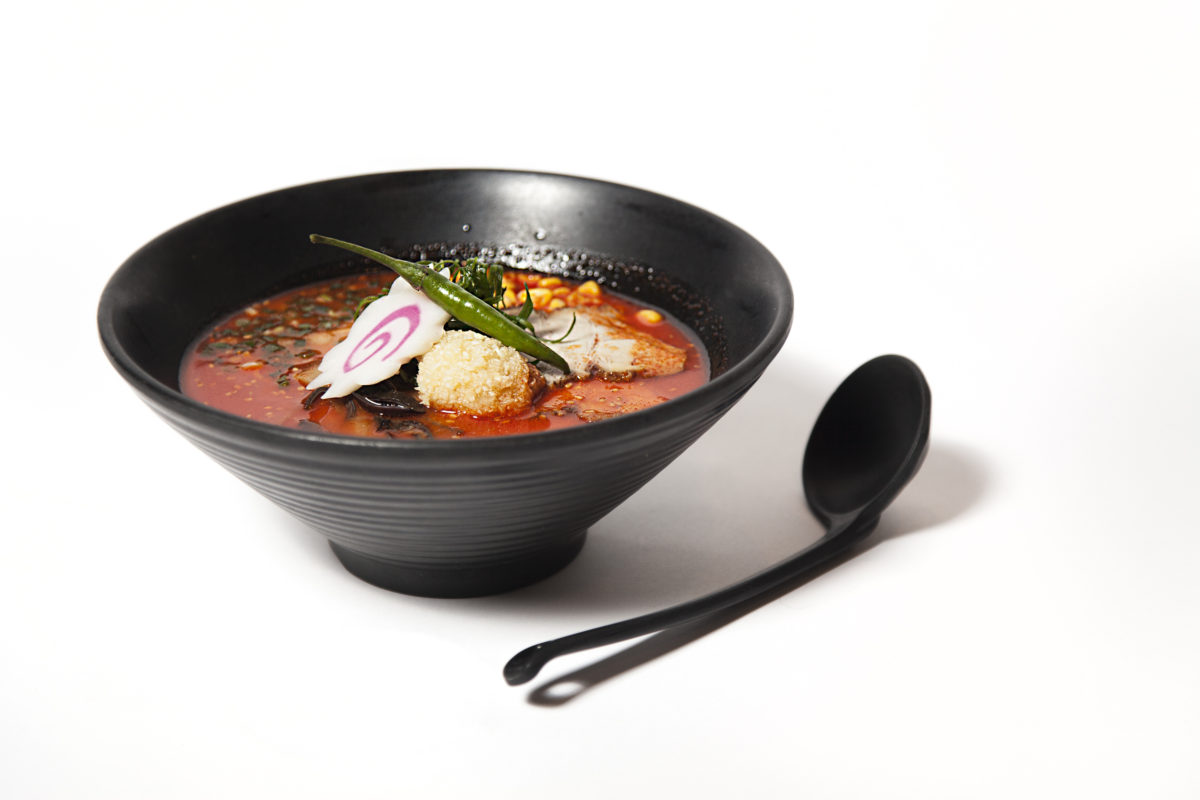Dashi: Unearthing the Fifth Flavour

We don’t mean to brag, but word on the street is our Dashi Broth is one of the best in Edmonton. We even caught the attention of Avenue Magazine, whose taste buds were rocked so hard they had to feature us in their July issue – check out our at-home recipe on page 35!
Now, while Dashi is a staple in Japanese culture, we understand that it may not be all that popular on this side of the Pacific. So, here’s what you need to know about Dashi- what it is, where it’s used, what your tastebuds can expect, and why us Japanese love it so much.
What is this dashi you speak of?
To put it simply, dashi is broth. But, more importantly it’s the culinary cornerstone of Japanese cooking. It is simple to make and all you need is 10 minutes and three simple ingredients: water, kombu, and katsuobushi.
..Say that again?
- Kombu is part of the seaweed family (and the contributing factor to Dashi’s label as an “essence of the sea”), giving Dashi it’s unique umami flavour- but be careful not to boil the kombu or your Dashi will have a bitter flavour.
- Katsuobushi (aka bonito, aka dried fish flakes) comes from dried and thinly-shaved bonito fish.
Note: if bonito doesn’t float your boat, you can substitute it for dried shiitake mushrooms.
(If you’re into meal prep, Dashi can keep refrigerated for up to a week, or frozen up to three months.)
What dishes is dashi in?
Well, since it’s a broth you are going to find it in a variety of soups, (think ramen), but it can also be used to poach fish and vegetables. Or, when us Japanese are really feeling adventurous we use Dashi to spice up our dashimaki-tamago (rolled omelet) and Tempura.
Why is dashi significant in Japanese culture?
Now you may be thinking “How can a dash of Dashi spice up a dish? It’s just broth.” This is where you’re wrong, my friend. This unique soup stock brings out and intensifies the flavours of other ingredients, creating the fifth flavour of food.
Fifth flavour?
That’s right- the Japanese have created a fifth flavour! Call it Umami.
Umami is created from the kombu and dried bonito, and while you may think you’ve never experienced this fifth flavour, you may be surprised. Many humans first encounter with umami is breast milk, but since most of us can’t remember this taste – here’s what to expect.
We like to refer to umami as the life of the party for your palate:
- It has mild taste, but it lingers.
- It awakens your tastebuds starting with the tongue, then moving it’s way to the throat, the roof and then the back of the mouth, ultimately leaving you salivating.
The umami taste becomes present when salt is used in food preparation, but be warned: a little bit goes a long way! To experience umami you don’t need to go shaker crazy. Like anything in life, moderation is key (but we’ve heard umami is enjoyed more in foods with lower sodium levels).
It has been said that you can get to know Japanese life by simply understanding the culture of Dashi, and we couldn’t agree more. Come in and try one of Nomiya’s signature Dashi dishes, such as:
- Nabemono (one of our hot pot dishes)
- Dashi udon
- Ramen – we’ve got a ramen for every day of the week!
While you’re here, ask us more about why Dashi is our national staple. Fill your belly, get enlightened, and leave satisfied.

